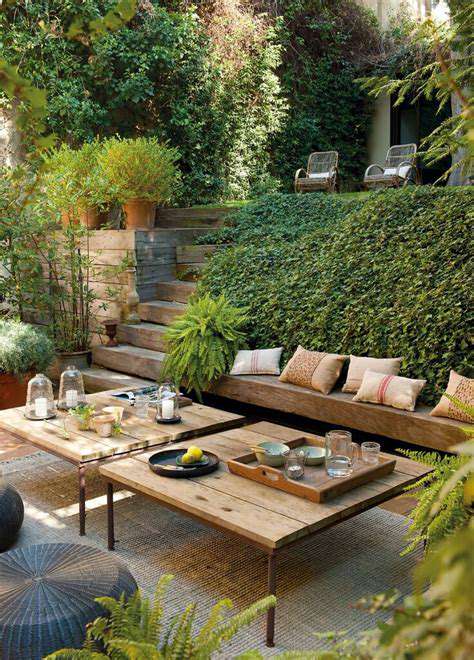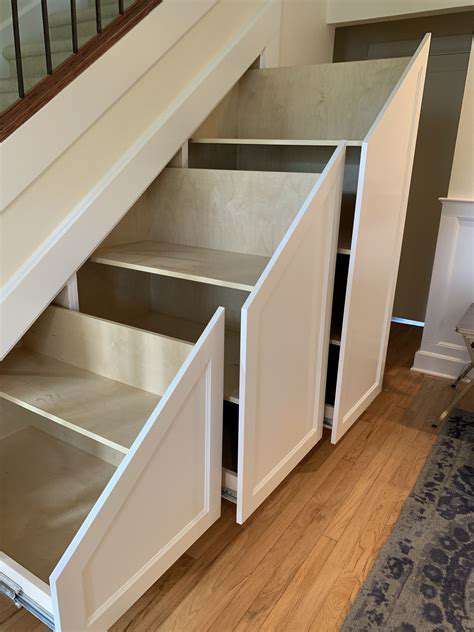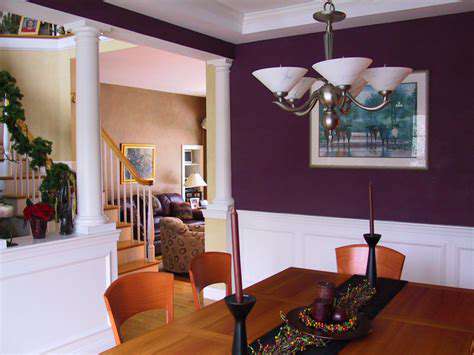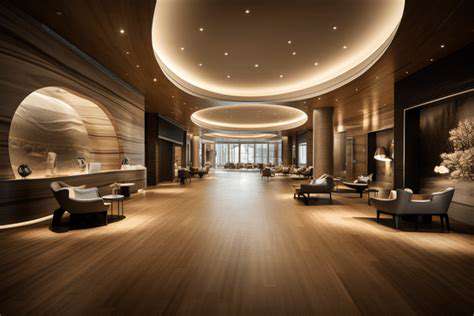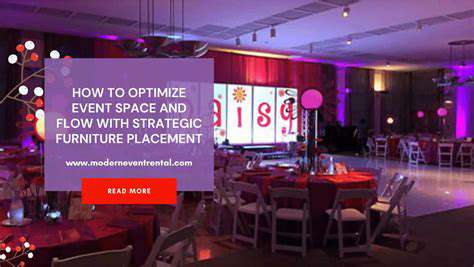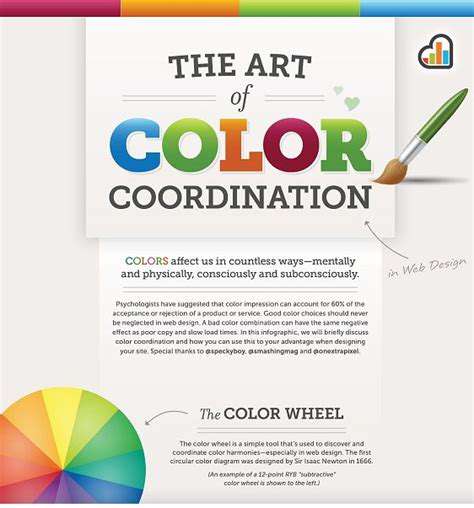Advanced Interior Color Scheme Design for Modern Home Renovations
The Role of Lighting in Color Perception
The Impact of Light Source on Color Appearance
Different light sources, such as incandescent bulbs, fluorescent lights, and natural sunlight, emit different wavelengths of light. These Variations significantly affect how colors appear to the human eye. Incandescent light, for example, tends to produce warmer tones, making reds and yellows appear more intense. Fluorescent lighting, on the other hand, can often cast a cooler, more neutral light, potentially making blues and greens seem more vibrant, but also potentially washing out warmer tones and making colors appear less saturated. Understanding the characteristics of different light sources is crucial for selecting colors that will look their best in a specific space and ensuring a cohesive and aesthetically pleasing color scheme throughout a home.
Moreover, the direction and intensity of light play a key role in color perception. Direct sunlight, for example, can cast strong shadows and highlights, dramatically altering the perceived intensity and saturation of colors. Indirect light, diffused by surfaces like walls or ceilings, softens colors and creates a more subtle and balanced ambiance. The interplay of light and shadow is a powerful design tool that can be leveraged to highlight particular features and create a dynamic atmosphere within a room. Properly understanding how light interacts with color is essential for achieving a desired aesthetic and creating a visually engaging and harmonious color scheme.
Color Temperature and its Visual Effect
Color temperature, measured in Kelvin (K), is a key factor influencing color perception. Higher color temperatures correspond to cooler colors like blues and greens, while lower color temperatures produce warmer colors like reds and yellows. The choice of color temperature can significantly impact the overall mood and atmosphere of a space. A warm color temperature might evoke feelings of coziness and comfort, while a cool color temperature can create a sense of freshness and serenity. Careful consideration of color temperature is vital in interior design, as it directly impacts how colors interact with each other and with the surrounding environment.
Understanding the relationship between color temperature and the surrounding environment is also important. A space with abundant natural light might benefit from a cooler color temperature to maintain a sense of balance. Conversely, a room with limited natural light might benefit from a warmer color temperature to create a more inviting atmosphere. Ultimately, the selection of color temperature should be carefully considered in conjunction with the other elements of the design, such as the style of the room, the furniture, and the overall desired aesthetic. This ensures a harmonious and visually appealing color scheme.
Personalizing Your Space: Considering Lifestyle and Style
Considering Lifestyle Factors for Optimal Color Choices
When selecting colors for your living spaces, carefully consider your lifestyle. A busy family with young children might benefit from calming, neutral tones that can withstand wear and tear. The vibrant energy of a bold color can be a great addition, but perhaps better suited to a den or a guest bedroom, where it won't be as heavily used. A quiet retreat for a single professional could embrace a more dramatic color palette, perhaps featuring deeper hues for a sense of sophistication and tranquility. Ultimately, the colors should reflect your daily routine and contribute to a comfortable and functional environment.
Furthermore, consider the activities you engage in within each room. A kitchen, for example, often sees a lot of action. A bright, cheerful color can energize you during meal preparation. However, a more subdued palette might be better suited for a dining room where relaxation and conversation are more prominent aspects of the experience. Understanding how you interact with each space is essential to choosing the right color scheme.
Harmonizing Style with Color Palettes
Your personal style should be a significant factor in your color choices. A contemporary aesthetic might lend itself to clean lines and modern color palettes, encompassing cool grays, sophisticated blues, and crisp whites. If you prefer a bohemian vibe, consider warmer tones such as terracotta, earthy greens, and rich browns, providing a welcoming and inviting atmosphere. A traditional style might embrace classic combinations like deep reds, rich golds, and luxurious blues, creating a sense of history and elegance.
Don't be afraid to experiment with different color combinations within your chosen style. Consider the interplay of various hues and how they can create a cohesive and visually appealing space. For example, a subtle accent wall in a contrasting color can add depth and visual interest to a room without overwhelming the overall aesthetic. A balanced approach to color coordination enhances the overall appeal of your home.
The Psychology of Color and Its Impact on Mood
Color psychology plays a crucial role in shaping the mood and atmosphere of a room. Warm colors, such as yellows and oranges, evoke feelings of warmth, energy, and enthusiasm. These colors are often used in kitchens and dining areas to stimulate appetite and create a vibrant ambiance. Cool colors, like blues and greens, create a sense of calmness, serenity, and tranquility. These colors are often preferred in bedrooms and bathrooms to promote relaxation and a sense of peace.
Understanding how colors impact your mood is critical when choosing colors for each room. Consider the specific emotions you want to evoke in each area. A vibrant bedroom might be ideal for a fun-loving young adult, while a calming living room would be perfect for a family looking for relaxation and tranquility. Consider the intended mood of each room when selecting paint colors, creating an environment that is both aesthetically pleasing and emotionally supportive.

